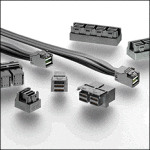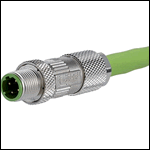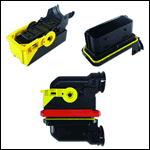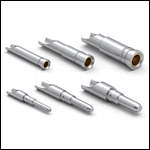How to Specify an In-Vehicle Network Connector
Today’s cars include sophisticated networks that control safety, entertainment, and communication in addition to vehicle performance, and all these systems need to talk to each other. Here, we look at how to specify an in-vehicle network connector.
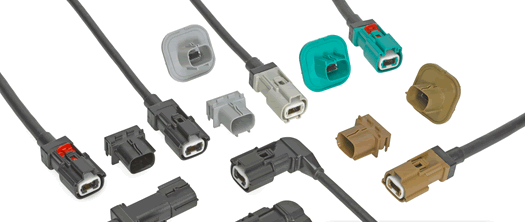
Molex’s HS Auto Link product line
Today’s vehicles increasingly employ sophisticated networks to control a number of vehicle functions, ranging from engine control to infotainment to vehicle safety systems. These networks are implemented with a maze of wiring, sensors, and connectors at crucial points. Designers should consider a number of factors in selecting the connectors used in these networks.
Location
For one, designers need to consider what part of the vehicle the connector will be located in as well as the function, whether it be a single wire-to-wire crimp connection, or a multi-pin connector. The connector required may be a specific plug or receptacle end of a multi-pin connector system intended to mate with a connector on another component such as a GPS, on-board computers, or aftermarket battery management devices.
Performance Specifications
Physical and electrical specifications, such as the number of contacts and voltage and current ratings all play into the decision. Keep in mind that connector choices are broader than ever, as connector makers have responded to market demands with products suited for today’s vehicle networks. Designers should give careful consideration to these products as they often solve multiple issues including size, weight, and performance.
For instance, HDMI connectors are increasingly used in automobiles for high-speed data transmission, particularly as smartphone connections increase in vehicles.
Environment
The environment in which the vehicle or equipment will be used or stored is one of the most important factors in selecting the electrical terminal or connector. For instance, an environment susceptible to extreme high and low temperatures or excessive moisture and debris, such as construction or marine equipment, may require a sealed connector.
Shielding should be considered also as the connector must be able to preserve the signal integrity of the entire interface.
Power rating is important. Connectors have a stated current rating specifying how much current a connector can handle continuously under optimum conditions. These connectors also have a maximum current rating that specifies the amount of current that can be handled under derated specifications.
Connector Size
Size is obviously crucial as designers must consider the wire gauge size to which the connection will be made. As an example, if the wire is being connected to a stud, such as in battery connections, the stud size should be known as well.
As vehicle manufacturers seek to reduce the size and weight of their vehicles, consider the form factor and size of the connectors used as well as the particular application within the vehicle; trucks and mobile equipment vehicles have space-constrained compartments, for example.
Fortunately, connectors with very dense spacing are now readily available. As an example, Molex makes the Mizi-P25 multi-pin connector system with a very small 2.5mm pitch, which can fit in very tight compartments.
Also, consider the additional hardware required in a vehicle interconnection system, such as wire harnesses, which most connector makers supply. These suppliers often also have custom tooling capabilities that can prove helpful for in-vehicle networks that utilize proprietary or custom components.
Information for this article was provided by Molex, Delphi Automotive Systems, and TE Connectivity.
Author Spencer Chin is a freelance technical writer and content producer based in New York.
